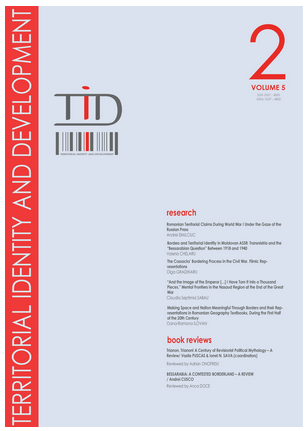FEMALE REPRESENTATIONS AND PRESENCES IN ROMANIAN FIRST WORLD WAR COMMEMORATIVE ART
FEMALE REPRESENTATIONS AND PRESENCES IN ROMANIAN FIRST WORLD WAR COMMEMORATIVE ART
Author(s): Georgeta FodorSubject(s): History, Gender Studies, Geography, Regional studies, Regional Geography, Applied Geography
Published by: Universitatea Babeş-Bolyai
Keywords: gender; women; collective remembrance; public monuments; memorial sites;
Summary/Abstract: Art does not represent reality, but it can be an expression of it. Artists always used real-life experiences, including such events as revolutions, wars, etc. as a source for their works. At the same time, political and religious leaders used artistic, visual language for promoting their military victories or the supremacy of their power or faith. So, artworks, buildings, sculptures, or paintings were valuable tools for propaganda. Art can be used as a manifestation of political power or as a form of protesting against it. Sometimes artists were asked to represent abstract values like liberty, victory, peace, or the nation. In such circumstances, artists used the feminine form and not only because the notions were feminine nouns. Considering these general premises, my study explores the female representations and presences in Romanian First World War commemorative art. The study examines how the feminine form was used in the First World War monuments. The personification of abstract notions was examined, together with the presence of real feminine figures in this type of art, and Romanian women’s involvement in creating and sponsoring these kinds of monuments. In addition, the study intends to assess the impact and the extent to which people in general, and women in particular, resonated with these monumental works of art. The main sources for this approach were the public monuments built during the interwar period as part of the commemoration practices of the war. Given the context, reference is also made to other works of art having female representations, created by the same artists who created the monuments under review.
Journal: Territorial Identity and Development
- Issue Year: 7/2022
- Issue No: 2
- Page Range: 31-55
- Page Count: 25
- Language: English

